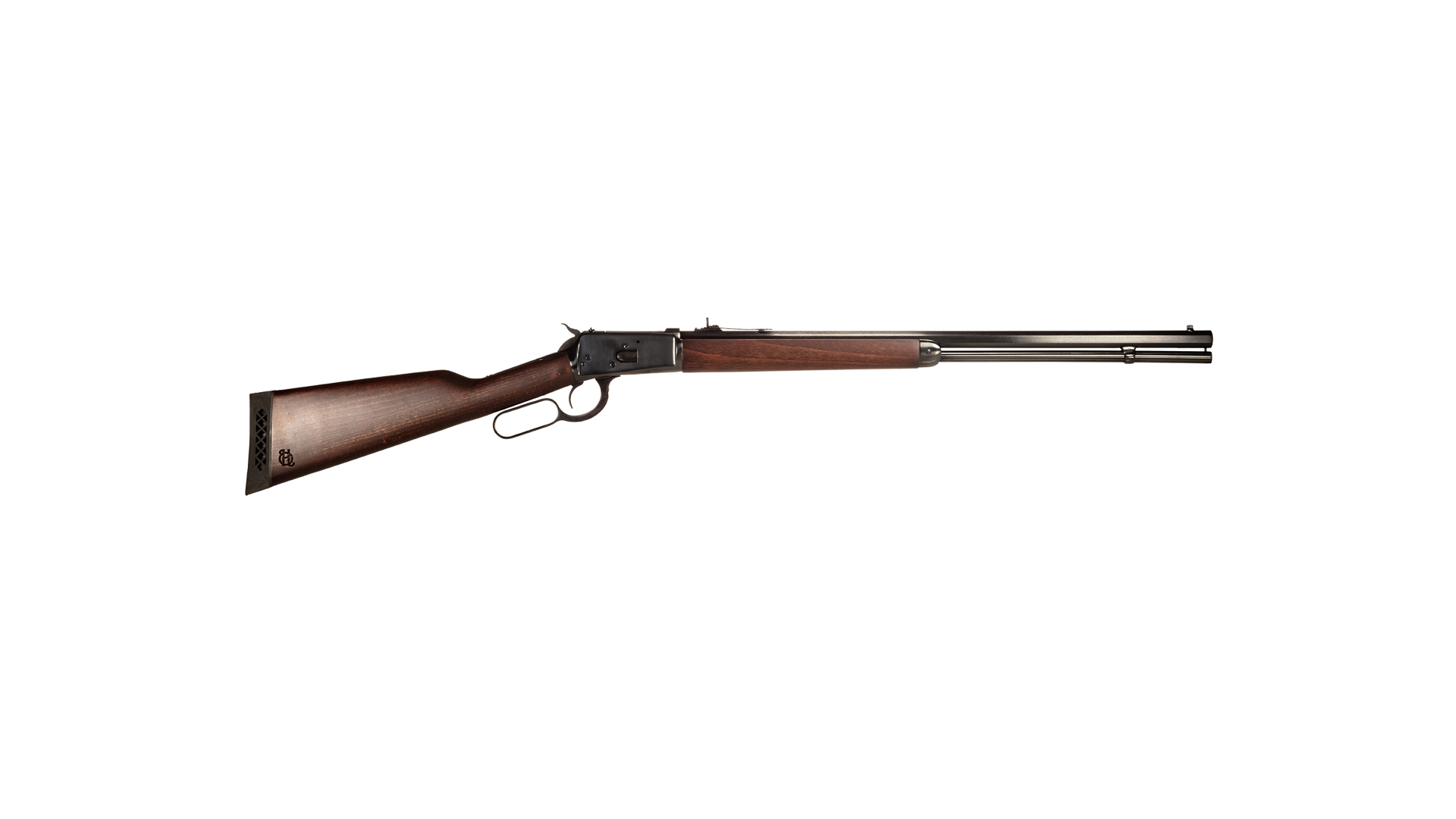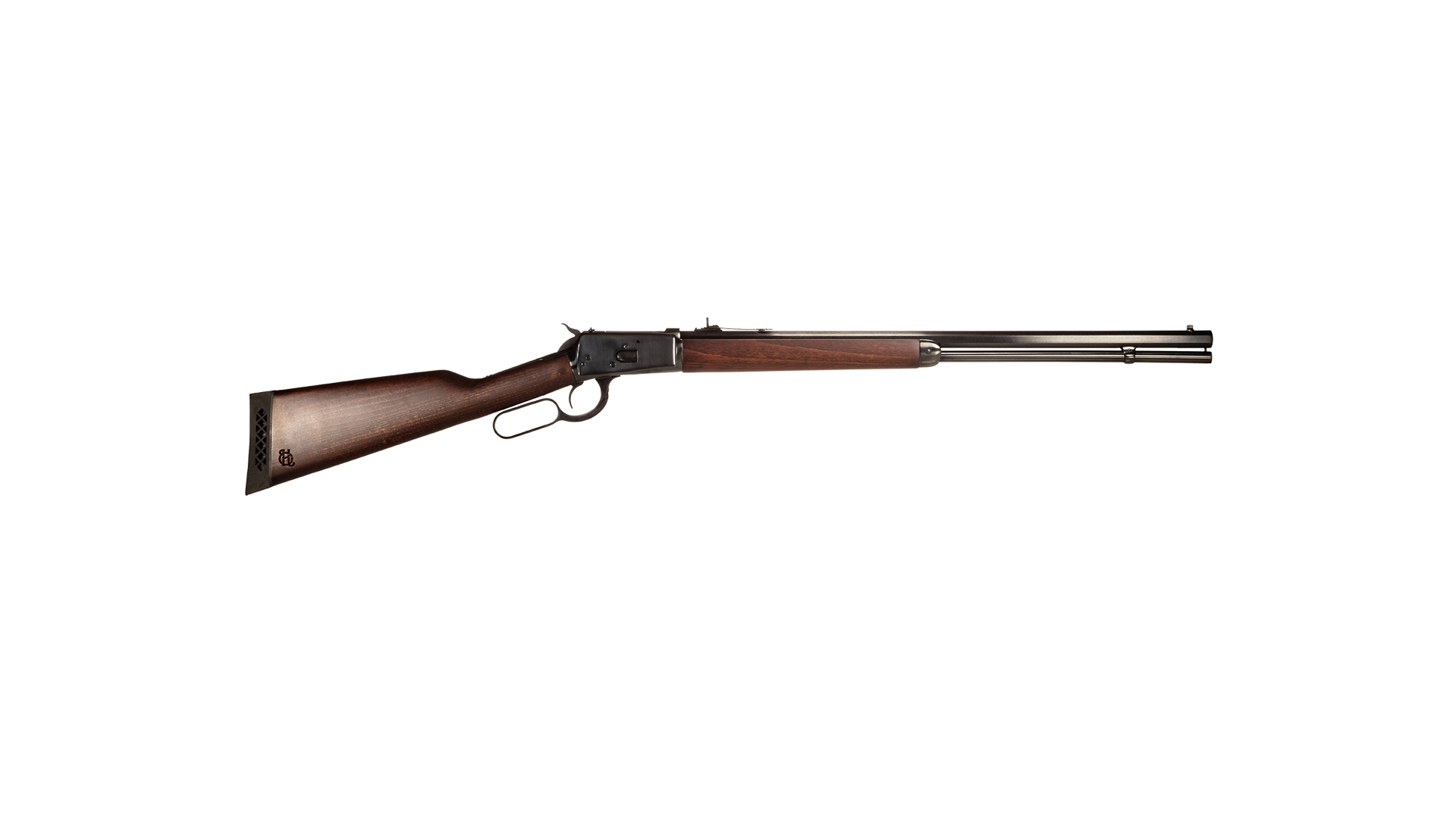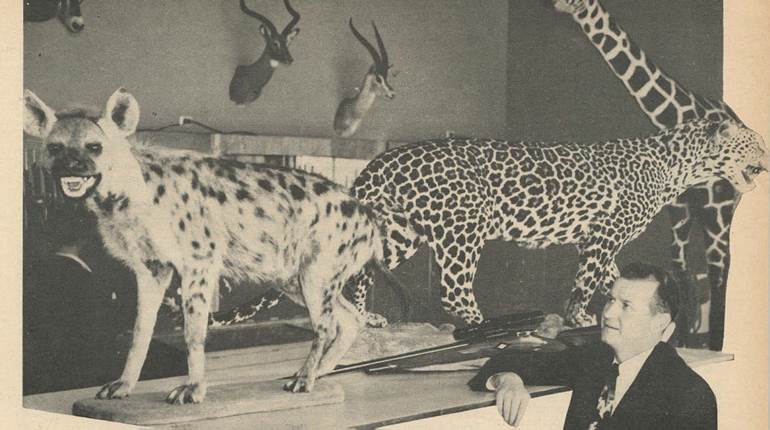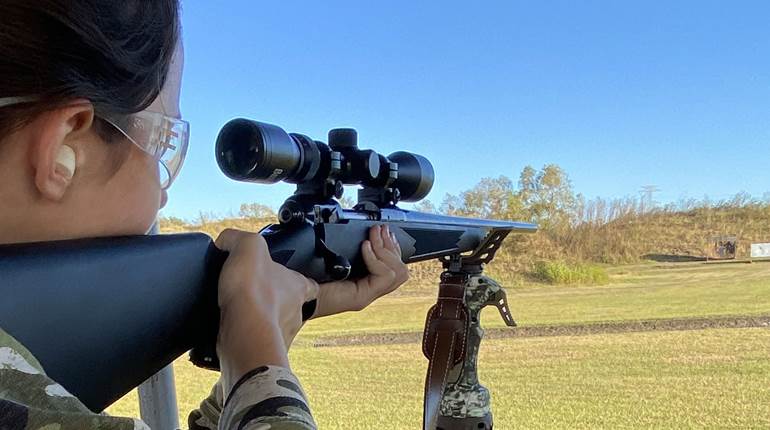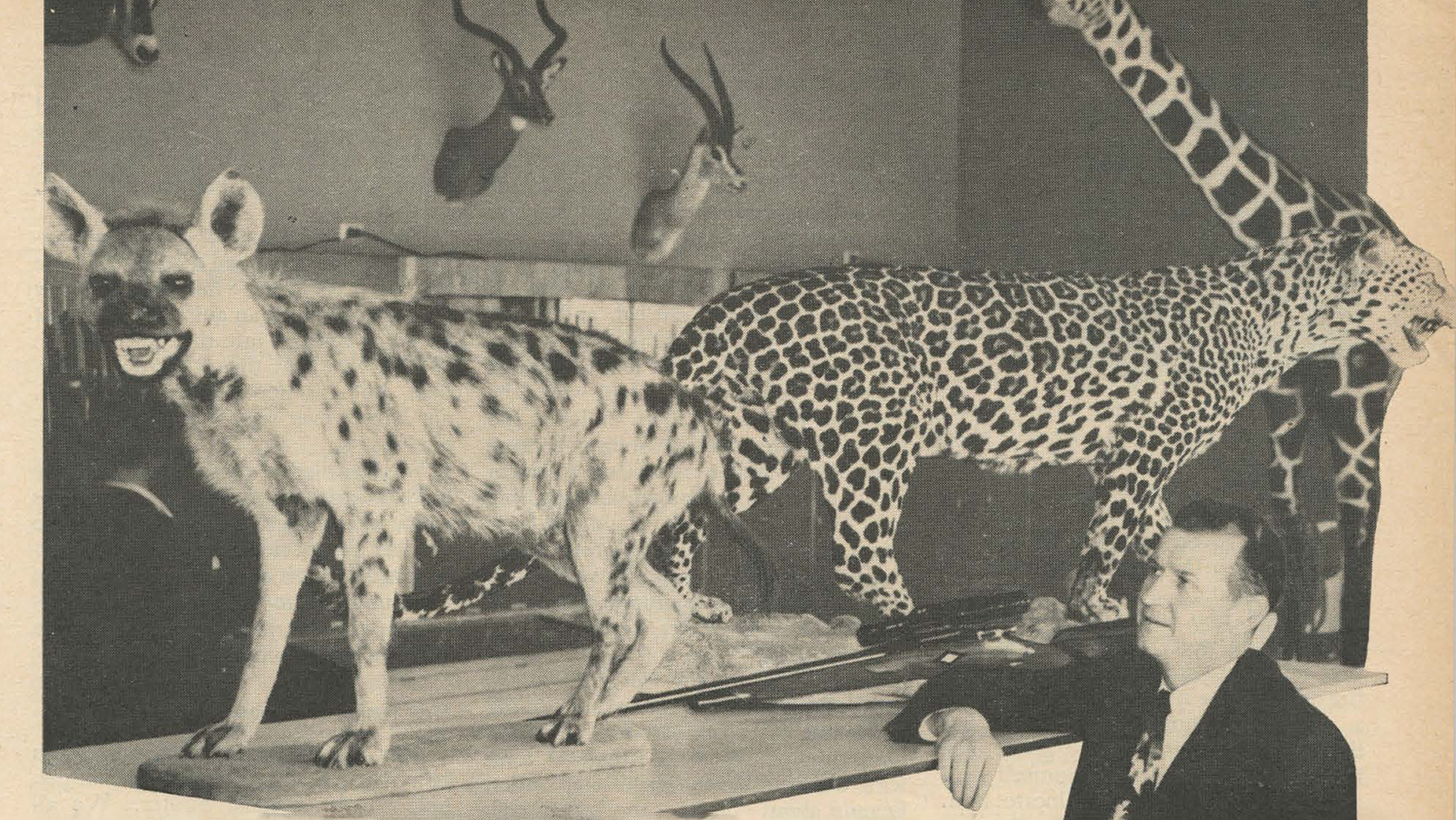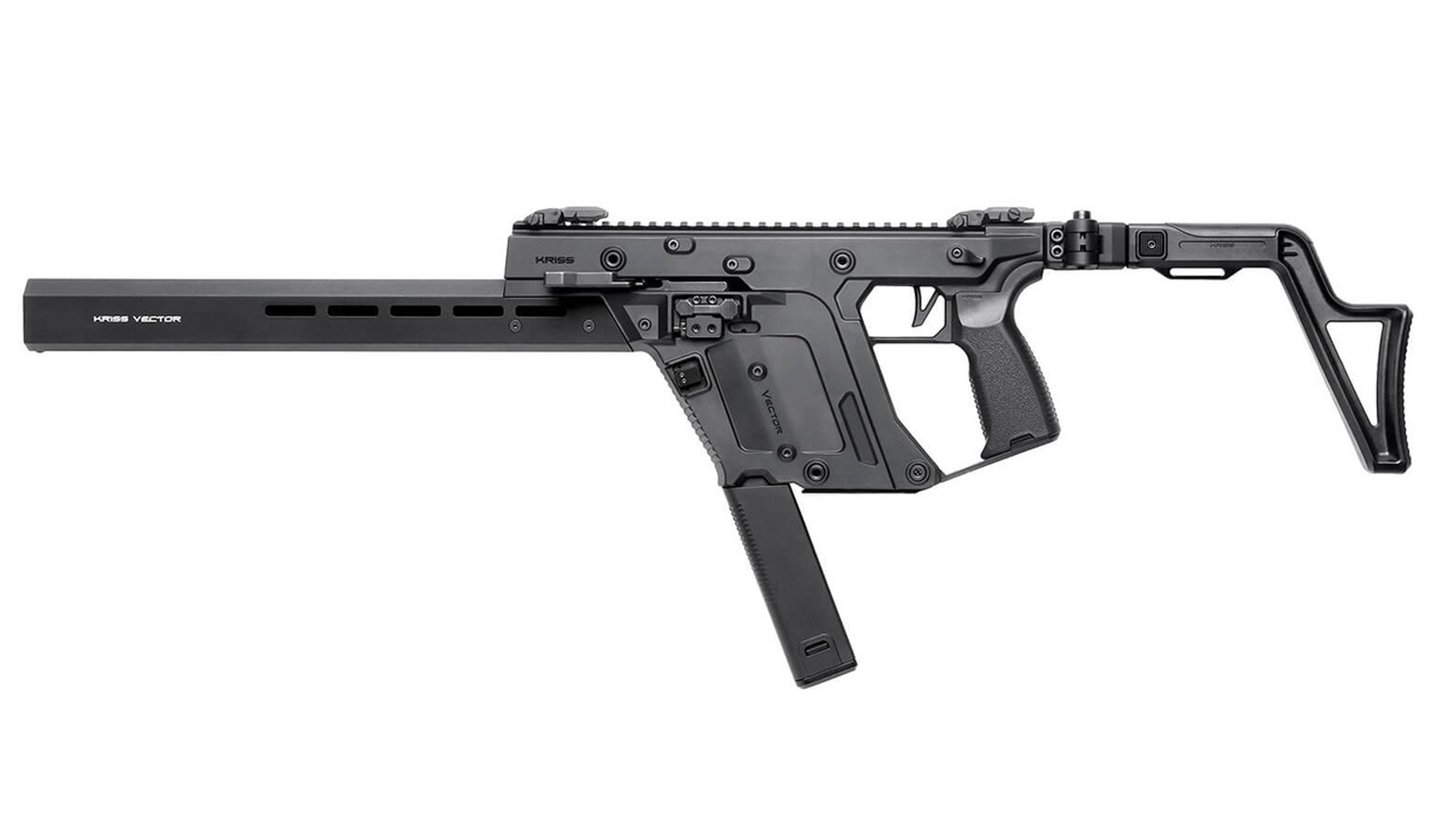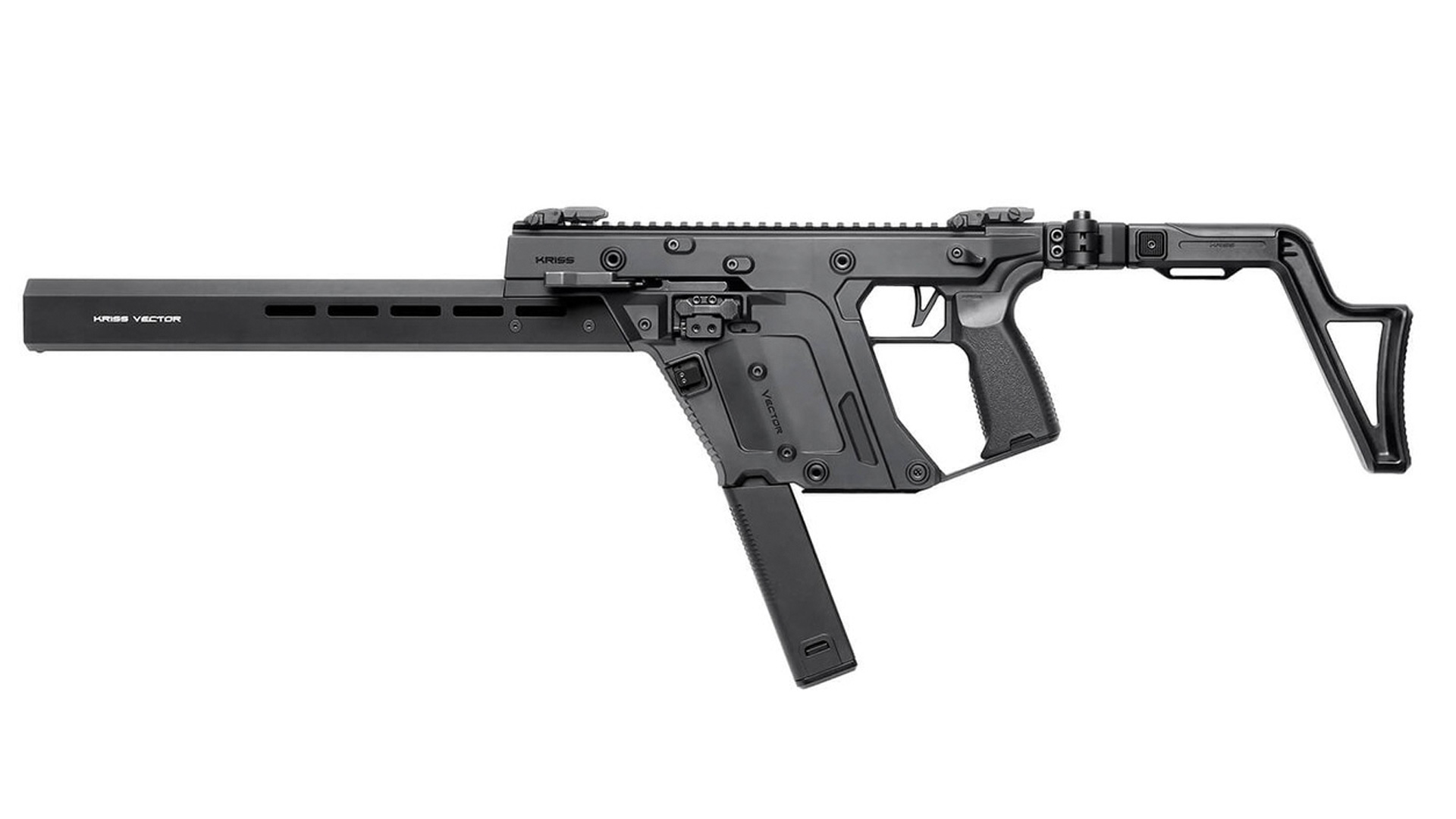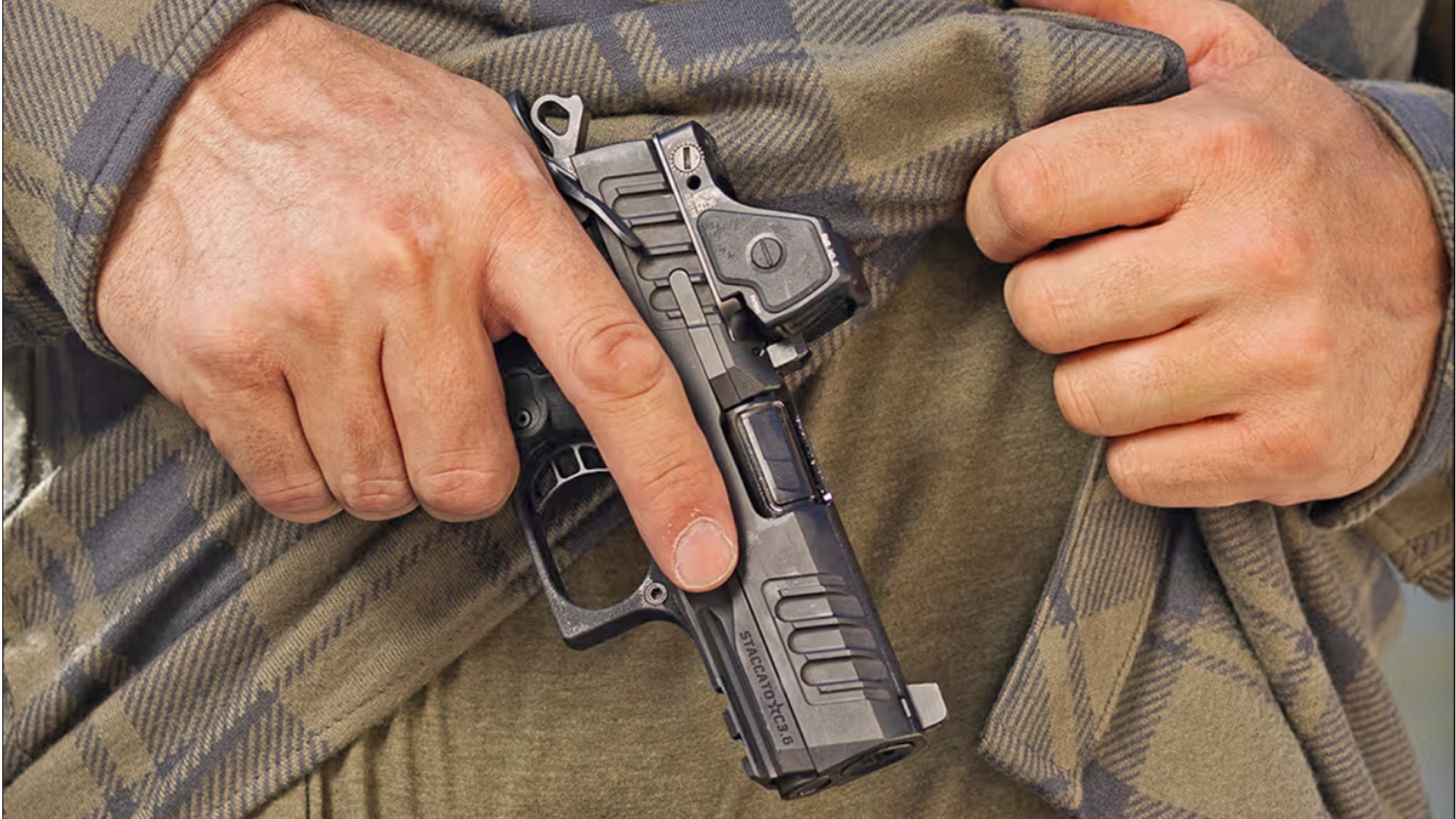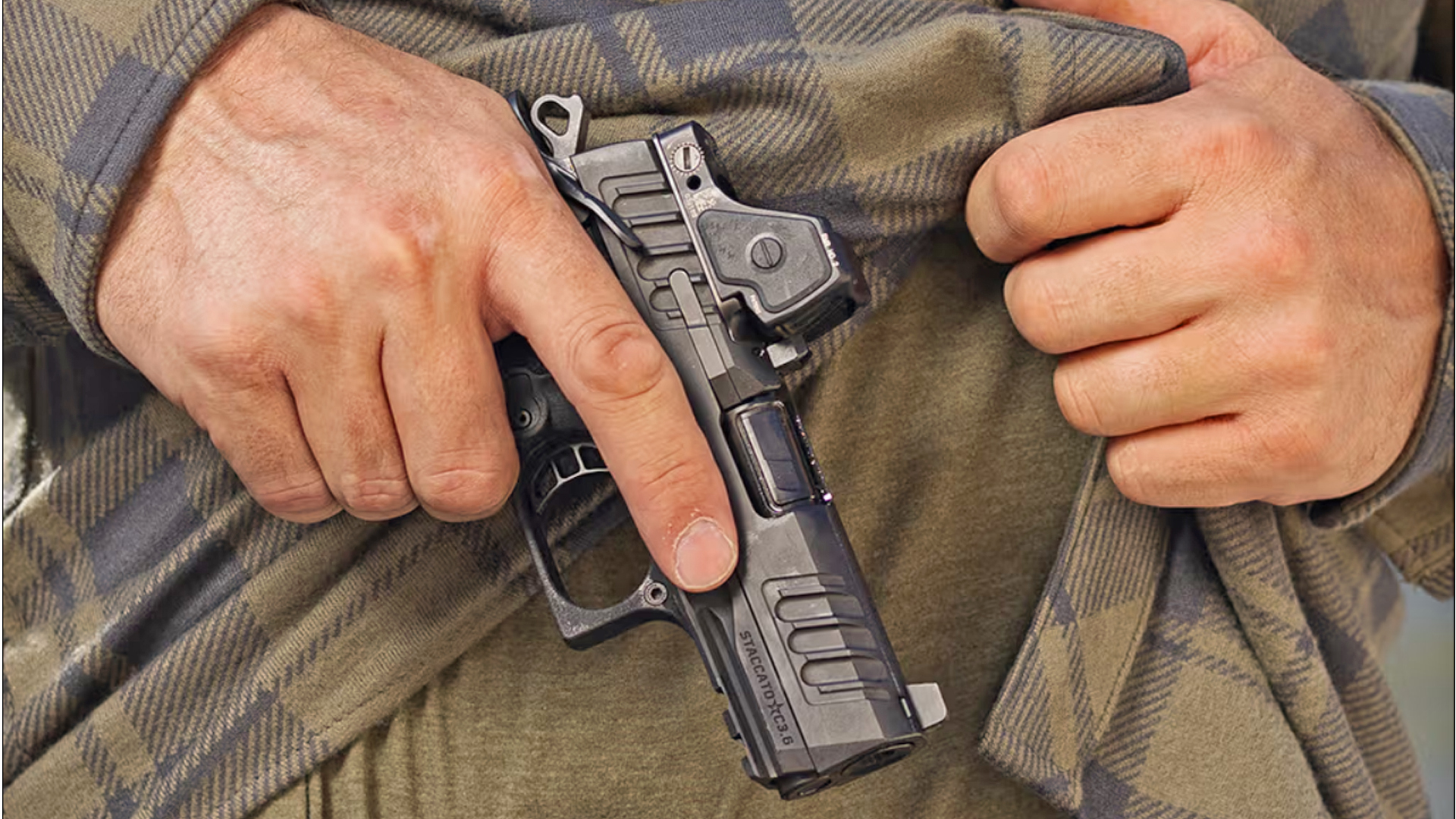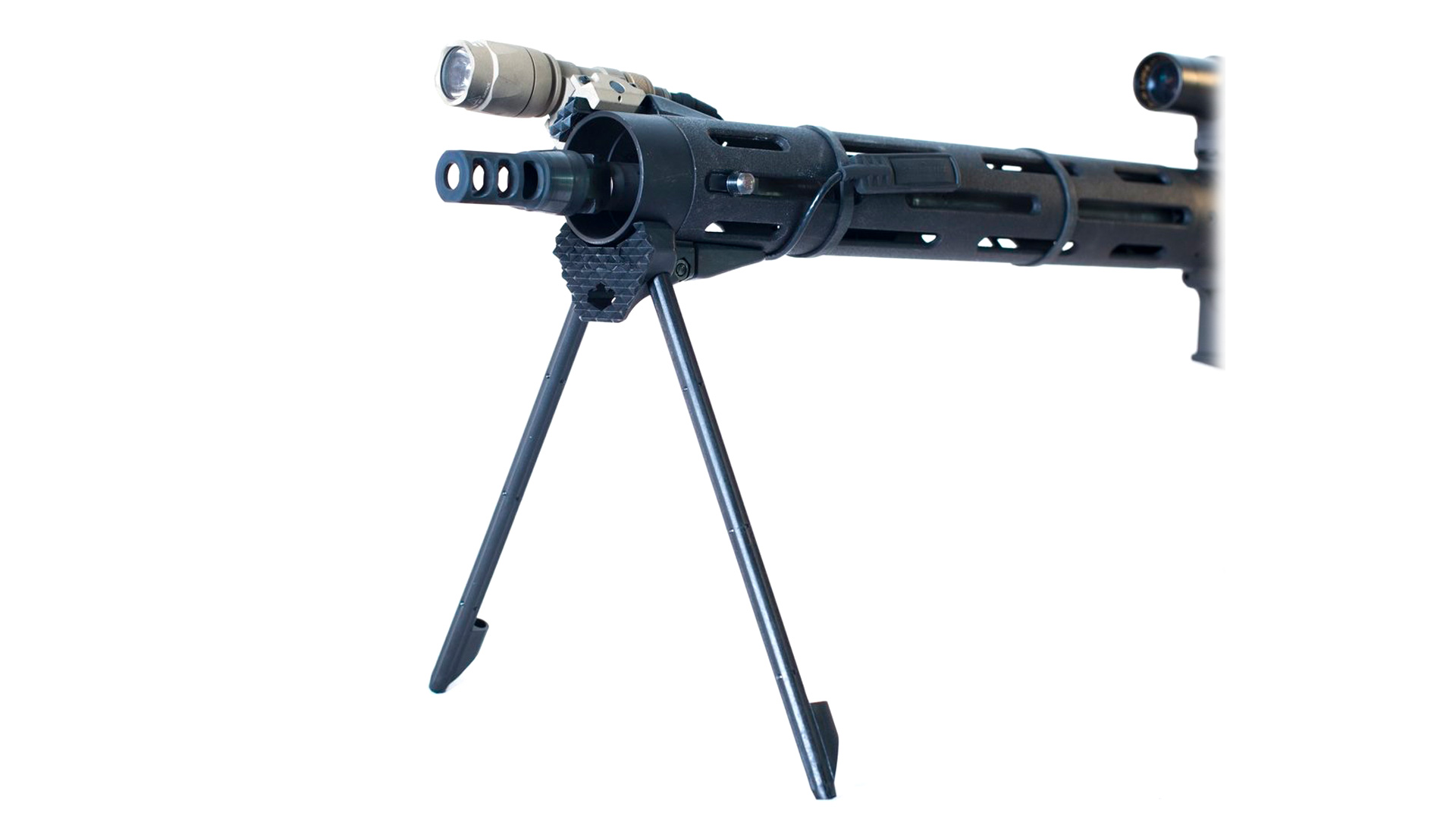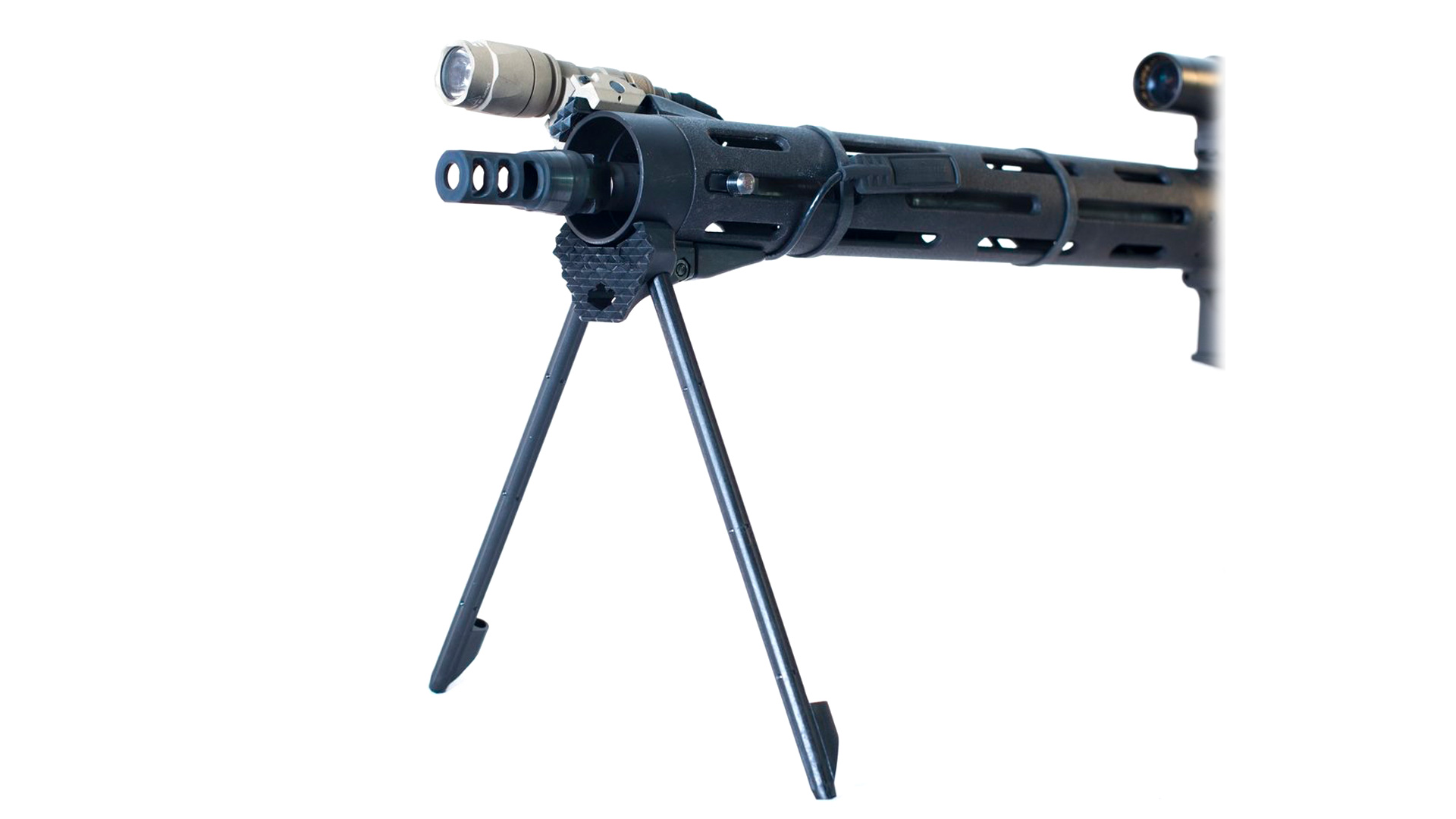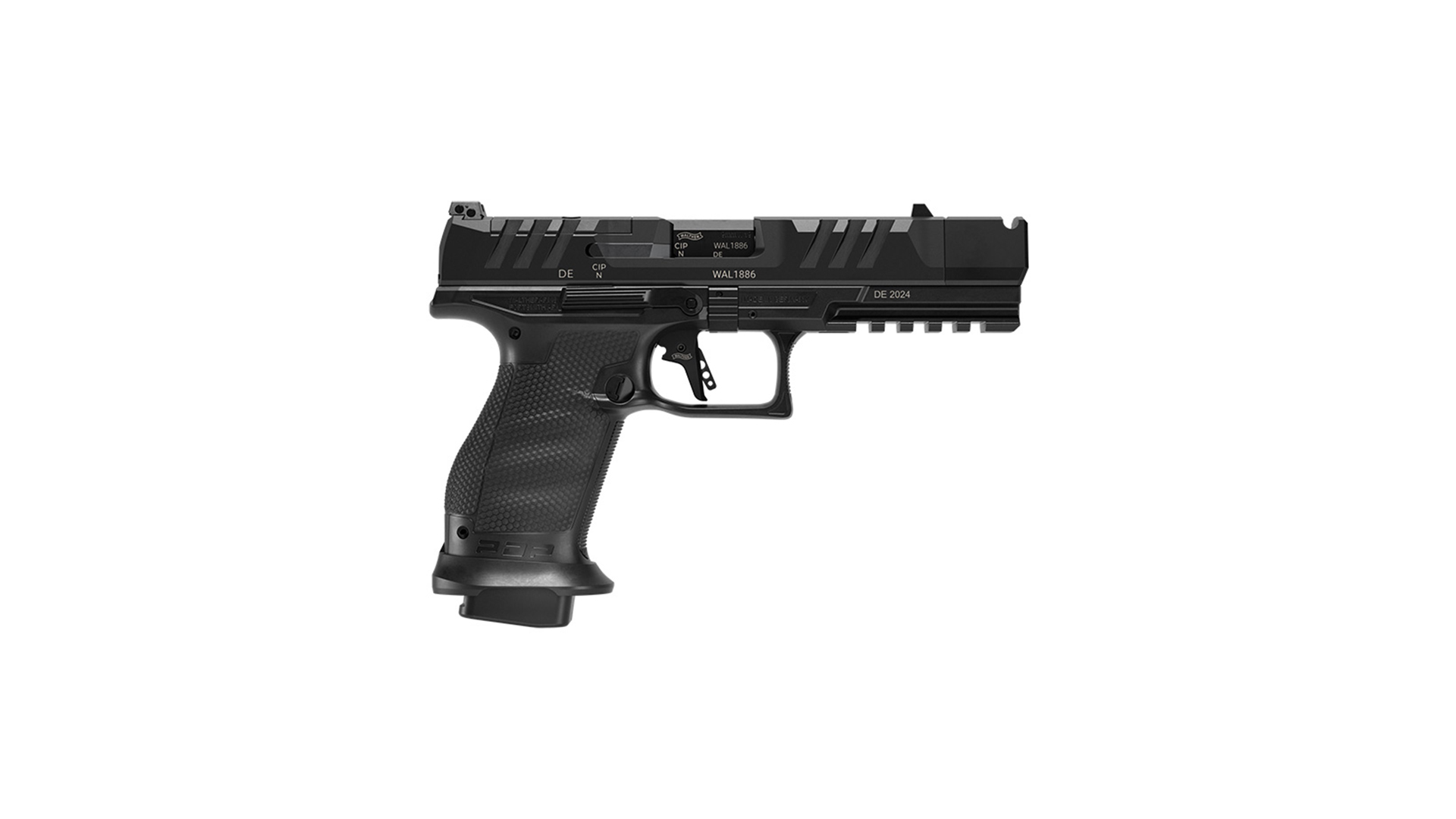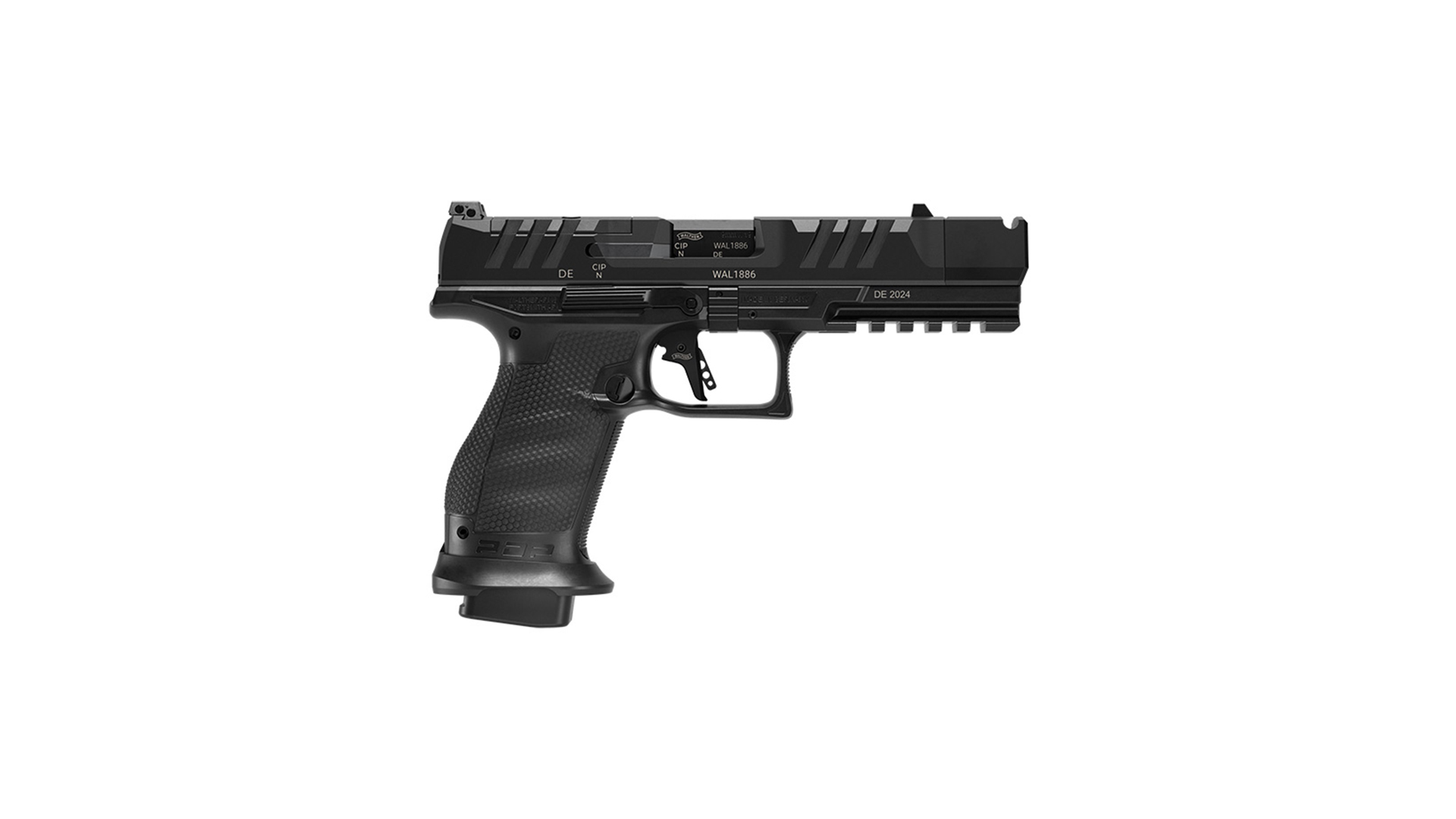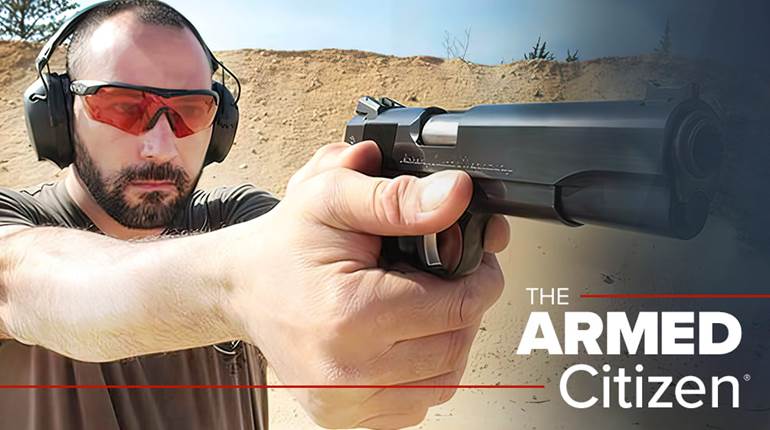
This article, "Small Arms Ammunition," appeared originally in the September 1965 issue of The American Rifleman. To subscribe to today's American Rifleman magazine, visit the NRA membership page here.
There are many technical terms relevant to the classification and nomenclature of small-arms ammunition. A knowledge of these is necessary in differentiating between the various types of ammunition, obsolete and modern.
The term 'small arms' is not subject to precise definition, but is generally considered to embrace projectile firearms of small caliber, including rifles, handguns, shotguns, submachine guns, and machine guns.
There are numerous cartridge-firing (powder actuated) devices, both industrial and military, which are not classed as small arms because they were not designed and made to function as weapons. In this category are stud drivers, oil well casing perforators, engine starters, gun chargers, kiln guns, and cable splicers.
Early Cartridges
The earliest small-arms cartridge consisted of a pre-measured charge of powder wrapped in paper. The word 'cartridge' is derived from charta, the Latin word for paper. The use of the paper-wrapped powder charge speeded the loading of military weapons, avoided waste of powder from spillage, and provided a uniform charge from shot to shot. In time, the bullet was either attached to or wrapped with the powder charge to make loading faster and more convenient. In some forms of the paper cartridge the cap or primer was attached to the cartridge, but was detached before the powder and bullet were loaded into the gun bore.
The paper cartridge remained standard for muzzle-loading military arms through the middle of the 19th century.
The combustible cartridge was an outgrowth of the paper cartridge. It was employed in muzzle-loading arms, revolving chamber arms, and in several early breech-loading arms. The casing enclosing the powder charge was made from nitrated paper, collodion, cloth, animal intestine, or some other material which would not leave a burning residue in the chamber or barrel.
 Typical rimfire cartridge series. (l. to r.) .22 BB cap, .22 CB cap, .22 short, .22 long, .22 long rifle, .22 extra long. Introduced about 1857, the .22 short is oldest metallic cartridge manufactured in the United States today.
Typical rimfire cartridge series. (l. to r.) .22 BB cap, .22 CB cap, .22 short, .22 long, .22 long rifle, .22 extra long. Introduced about 1857, the .22 short is oldest metallic cartridge manufactured in the United States today.
The combustible cartridges for the Prussian needle-gun and French Chassepot breech-loading rifles were of self-contained type. That is, the means of ignition (primer) was a part of the cartridge. These early self-contained (self-primed) cartridges were not self-obturating (self-sealing). Sealing of the breech against rearward escape of gas usually depended on a close mechanical fit between component parts of the breech mechanism. Accumulated powder fouling and erosion made it difficult to maintain effective mechanical obturation, and for those reasons these arms were only partially successful.
Early breech-loading arms using rigid non-expanding metal or metal-base cartridges or 'loaded-ball' ammunition were likewise of minor importance only, and for the same reasons.
Truly successful breech-loading small arms were not possible until the development of efficient self-obturating cartridges which occurred around the middle of the 19th century.
Classifications
The self-contained small-arms cartridge, or 'round,' combines all of the components necessary to fire a weapon once. Based upon type of ignition, currently available self-contained small-arms cartridges are classed as pin-fire, rimfire, or center-fire.
Pin-fire cartridges are made in a few types only, and are essentially obsolete. No modern guns are adapted for pinfire ammunition.
In the conventional externally-primed center-fire cartridge, the primer or means of ignition is seated in a small pocket in the center of the case bead. A vent or flashhole in the bottom of the primer pocket communicates with the powder chamber within the case. Most forms of externally-primed center-fire cartridges are reloadable.
In the rimfire cartridge the priming mixture is spun centrifugally into the internal rimfold at the base of the case. The rim locates the cartridge in the gun chamber and also serves as a means of extracting the loaded cartridge or fired case from the chamber. The reloading of rimfire ammunition is not practicable.

Evolutionary Cartridge Types
(a) Cal. .58 paper-wrapped cartridge for U.S. Civil War period muzzle-loading rifle-musket. After breaking cartridge, powder charge was poured down barrel and then wadded with paper wrapping. Naked hollow-base Minie bullet was seated on charge with ramrod. Ignition was by external percussion cap or tape primer.
(b) Sharps cal. .52 linen-cased combustible cartridge for Sharps breech-loading rifle and carbine. Cartridge was loaded directly into gun chamber. Knife edge on upper face of breechblock sheared off base of cartridge as action was closed. Ignition was by external percussion cap, disk primer, or tape primer.
(c) Colt cal. .36 combustible cartridge for percussion revolvers. Fragile outer casing of animal intestine was ruptured in ramming cartridge into chamber. Ignition was by external percussion cap. Similar cartridges were made for Colt revolving rifles.
(d) Hunt cal. .54 'loaded ball' cartridge for Jennings rifle. Powder charge was contained in cavity in bullet base. Ignition was by external pill primer.
(e) Burnside cal. .54 metal-cased cartridge for Burnside carbine and rifle. This self-obturating cartridge was loaded into front end of tilting breechblock. Case bulge at base of bullet contained lubricant. Hole in base of cartridge case allowed primer flame to pass into charge. Ignition was by external percussion cap.
(f) Maynard cal. .50 metal-cased cartridge for Maynard carbine. Body of case was soldered sleeve which was soldered to disk base. This self-obturating cartridge was reloadable. Ignition was by external percussion cap or tape primer. Primer flame entered charge through hole in base of cartridge case.
(g) Cal. .46 Extra Long rimfire cartridge. Typical copper-cased self-primed rimfire cartridge in which priming mixture was spun centrifugally into internal rim fold. Rimfire cartridge types are now made in small calibers only.
(h) Cal. 11 mm. pin-fire revolver cartridge. In this self-contained cartridge, the internal percussion cap was installed horizontally with base of the case. A pin resting against the cap extends through the case wall so that it can be struck by the hammer of the gun.
(i) U.S. cal. .50-70 center-fire Service cartridge with Benet internal cup primer. This form of folded-head copper-cased cartridge was not reloadable.
(j) British cal. .577 / .450 Martini-Henry center-fire Service rifle cartridge with Boxer primer. Body of the case was coiled brass riveted to an iron base.
(k) U.S. cal. .45-70 center-fire Service cartridge with Boxer-type external primer. This solid-head copper-cased cartridge was reloadable.
Percussion Primers
Percussion primers are standard in most forms of small-arms ammunition, but some types of military ammunition have electrically-fired primers.
The American, or Boxer, primer is standard in American-made commercial and military small-arms ammunition. The Boxer primer is assembled with an anvil. Centerfire ammunition made in other countries may be primed with the Berdan primer which lacks an anvil. Cartridge cases adapted for the Berdan-type primer have anvils formed in the bottom of their pockets.
Internally-primed centerfire ammunition has been obsolete for many years except for the German-made cal. 4 mm. Üebungsmunition which is still manufactured.
Many small-arms cartridges are designed to function in one class of firearm only, i.e., shotgun, rifle, or handgun. This serves as a general means of grouping cartridges by tape. However, there are numerous cartridges which are regularly used in more than one class of firearm.
The term 'metallic' as used in cartridge nomenclature indicates that the cartridge case is of all-metal construction. Most bulleted cartridges fired in rifled firearms have metallic cases although plastic cases have been used. Some shotgun shells are made with metallic cases, but the more common forms combine a metal base with body of plastic or rolled paper. Some shotgun shells have all-plastic cases.
Many early breech-loading small arms were adapted for self-obturating cartridges which did not contain an integral primer or means of ignition. This form of cartridge is called 'separate primed.' Separate-primed cartridges were fired by percussion cap, disk primer, pill primer, or tape primer.
There have been fairly recent military experiments with combustible or caseless self-primed small-arms cartridges, but none has been successful. The problem of obturating or sealing the breech of the gun against the escape of gas has not been completely solved.
Small-arms cartridges may be classified according to use:
- Combat or Service
a. Ball
b. Armor-piercing
c. Armor-piercing-Incendiary
d. Armor-piercing-Incendiary-Tracer
e. Armor-piercing-Lachrymatory
f. Incendiary
g. Tracer
h. Spotter-Tracer
i. Observation
j. Explosive
k. Grenade launching
I. Shotgun shell - Non-combat and Special
a. Sporting
b. Practice
c. Match
d. High-pressure test
e. Blank
f. Frangible
g. Dummy (range or functioning)
h. Flare (signal)
i. Line throwing
j. Shotgun shell
Small-arms cartridges may be classified further according to case shape and head form.
There are 3 general shapes of cartridge case: (1) straight, (2) tapered, and (3) bottleneck.
Most modern center-fire rifle cartridge cases are of bottleneck type since this case form provides the greatest powder capacity commensurate with over-all case length. The tapered case form is obsolescent. Cartridge s of this type manufactured currently were introduced many years ago. All bulleted rimfire cartridges and most center-fire revolver cartridges now manufactured have straight cases. All conventional shotgun shells have straight cases. Cal. .22 rimfire shotshells have slightly bottlenecked cases.
Standard cartridge head forms are:
1. Rimmed (flanged)
2. Semi-rimless
3. Rimless
4. Rebated-rimless (reduced rim)
5. Belted rimless
A few metallic center-fire cartridge s have been made without a flange or extractor groove. Most of these have been experimental and are unlikely to be encountered except in collections.
All currently manufactured shotgun shells and metallic rimfire cartridges are of rimmed type.
Solid-Head Case
The solid-drawn, solid-head case is now standard for most metallic centerfire cartridges. In the solid-head (solid bar head) cartridge case, the interior base is level with the top edge of the vent opening. This method of construction has largely superseded the balloon-head (hollow bar head) case which is not as strong. In the balloon-head case the base portion or web is relatively thin and the primer pocket extends up into the powder chamber. The folded-head center-fire cartridge case became obsolete with the introduction of smokeless powder. Center-fire metallic cartridges with soldered or riveted-on heads also became obsolete at that time.
Naming Systems
Several systems have been devised for naming metallic cartridges. Under the American system the designations for rimfire cartridges begin with the caliber expressed in hundredths of an inch. The relative case length may be given where more than one case length exists in a specific caliber. A typical series would be the .32 extra short, .32 short, .32 long, and .32 extra-long rimfire cartridges. The name of the originating firm, country of issue, designer, or weapon for which it is adapted, may be included in the designations. The .44 Henry, .41 Swiss, .58 Robert, and .58 Musket are typical.
 Cartridge case shapes. (l. to r.) tapered, bottleneck, straight. Tapered case form is obsolescent.
Cartridge case shapes. (l. to r.) tapered, bottleneck, straight. Tapered case form is obsolescent.
The weight of the powder charge in grains (and occasionally the weight of the bullet) was often given in the designations of early American rimfire cartridges. The .52-70 Sharps and .25-10-67 Stevens are representative. The first number indicates the caliber, the second the powder charge, and the third the weight of the bullet.
The obsolete series of Spencer rimfire cartridges, adapted to Spencer leveraction rifles and carbines, were named under a system peculiar to the Spencer firm. The basic Spencer cartridge was the No. 56 or .56- .56. This cartridge had a straight case and its nominal caliber was .56. The Spencer .56 -.50, .56- .52, and .56-.46 cartridges were derived from the parent .56-.56 case. The Spencer cartridges were the exception to the general rule in that the nominal caliber was expressed by the second number, not by the first.
American and foreign ammunition catalogs , have always listed rimfire and centerfire cartridges separately. This was essential to avoid confusion between rimfire and centerfire cartridges which were designated similarly. Several early metallic cartridges were made in both rimfire and centerfire form. They were not interchangeable, but some rifles were made with a convertible firing pin to permit optional use of either type cartridge.
Uncomplicated System
The system for naming American center-fire blackpowder cartridges was uncomplicated. The full designation gave the nominal caliber in hundredth s of an inch, weight of powder charge, weight of bullet, and basic name, in that order. For example, the Service cartridge for the Springfield Model 1873 Service rifle was designated .45-70-500 Government. It was loaded with 70 grs. of blackpowder and a 500-gr. bullet.
The length of the case in inches and the general form of the cartridge case (straight or bottleneck) were sometimes included in the designation to distinguish between similar cartridges which were not interchangeable. The blackpowder nomenclature system was employed in naming some of the early American smokeless powder cartridges including the .30-30 W.C.F. (Winchester Center-Fire) and .30-40 Krag (.30 U.S. Army). The second number in these designations represented the standard charge weights of the smokeless powders first used in loading these cartridges. These charge weights were soon changed with the development of more efficient smokeless powder s, but the original designation s were retained.
Powder Capacities
Powder capacities of several early center-fire blackpowder cartridges were reduced in the transition from the folded head to the stronger solid-head case construction, but the original charge designations were retained.
The year of adoption is a part of the designations of several U. S. Service small-arms cartridges. One so named was the U.S. Cartridge, Cal. .30, Model of 1903 (.30-'03 Govt.). On adoption of the 150-gr. Model 1906 pointed bullet, the cartridge case was shortened slightly. It was then re-designated U.S. Cartridge, Cal. .30, Model of 1906 (.30-'06 Govt.). The Model 1906 cartridge with Model 1906 bullet remained standard until 1925 when the Model 1906 bullet was superseded by the 172- gr. M1 boattail bullet. The U. S. Service rifle cartridge was then re-designated Cartridge, Ball, Cal. .30 M1. In 1944 this cartridge was superseded by the Cartridge, Ball, Cal. .30 M2 assembled with 152-gr. M2 pointed bullet. The latter cartridge had been standard for ground use since 1939.
NATO Cartridge Adopted
On Dec. 15, 1953, the Cartridge, 7.62 mm. NATO was adopted as the standard rifle and machine gun cartridge for member nations of the NATO. It was the second U.S. Service rifle and machine gun cartridge to be designated under the metric system, the first being the 6 mm. Lee of 1895.
The U.S. Cartridge, Ball, Cal. .45, Model of 1911 (M1911) is another official U. S. Service cartridge in which the year of adoption was included in the designation. This practice was dropped for new items with introduction of the M system of Ordnance designations (M1, M2, etc.) in 1925.
The advertised muzzle velocity was made a part of the designation for the Savage .250-3000 center-fire cartridge designed by Charles Newton for the Savage Model 1899 lever-action rifle. No other American factory-loaded cartridge has been named in this manner.
The calibers of some of the earliest American smokeless powder cartridges were expressed in thousandths of an inch. The .303 Savage and .236 U.S.N. were among the first in this group. The Service designation for the .236 U.S.N. cartridge was 6 mm. Lee.
Some American cartridges have been given a variety of names which conceals the fact that they are interchangeable insofar as cartridge case dimensions are concerned. The following cartridges have different designations, but are interchangeable:
.25-20 Winchester, Marlin, Remington
.25-20 Winchester & Marlin
.25-20 W.C.F.
.25-20 Winchester
.25-20 Winchester High Velocity
.25-20 Marlin
Information on cartridge interchangeability will be found in most factory ammunition catalogs.
 Typical center-fire cartridge cases. Early Sharps folded-head case on left has internal cup reinforcement to strengthen head. Center cartridge is solid-drawn balloon-head (hollow bar head) case developed later. Now almost obsolete, balloon-head case was superseded by stronger solid-drawn solid-head (solid bar head) case at right.
Typical center-fire cartridge cases. Early Sharps folded-head case on left has internal cup reinforcement to strengthen head. Center cartridge is solid-drawn balloon-head (hollow bar head) case developed later. Now almost obsolete, balloon-head case was superseded by stronger solid-drawn solid-head (solid bar head) case at right.
It is not always possible to determine the actual caliber of a cartridge from its factory designation. For example, the .38 S&W Special cartridge is not a true cal. .38 since its nominal bullet diameter is .357". The groove diameter of barrels made for this cartridge will vary from .352" up to .358" and larger, depending on the manufacturer. A similar situation exists with .22 center-fire rifle cartridges. The .218 Bee, .219 Zipper, .220 Swift, .221 Remington, .222 Remington, and .223 Remington cartridges are all loaded with .224" diameter bullets. Cartridge designations often reflect the whims of their designers or manufacturers. They may indicate the nominal bore or groove diameter of the firearm to which they are adapted, or differ from any of these dimensions.
The Term 'Magnum'
The term 'magnum' as applied to small-arms cartridges is of British origin. Magnum cartridges are generally larger and more powerful than the usual cartridges in any given caliber.
The term 'express' is also of British origin. Express cartridges are generally loaded with lighter than usual bullets and heavy powder charges to provide the highest possible velocity levels.
The German or European system of naming center-fire metallic cartridges is based on the metric system. The cartridge designation gives both the caliber and the case length in millimeters. The suffix "R" is added to the designation if the cartridge is of rimmed construction. The name of the designer, originating firm, or date of adoption for a military cartridge, may supplement the dimensional data. The caliber designations may not be precise, but are usually based on the nominal barrel groove or bore diameters.
In 1904 the German Government adopted a 154-gr. pointed rifle bullet to replace the original 227-gr. round-nose bullet which had been adopted in 1888. The nominal diameter of the M1888 bullet was 0.318"; that of the new bullet was increased to 0.323". The adoption of the larger Spitzgeschoss or S-bore bullet necessitated a change in rifling specifications. The original German Service cartridge had been designated 8x57J, but the new cartridge was designated 8x57JS to distinguish it from the earlier round. The letter "J" in these designations is the abbreviation for Infanterie, or Infantry. The letter "J" is often used for "I" in the German language. Under current West German military practice, the 9 mm. Parabellum (Luger) cartridge is designated 9 mmx19. The 7.62 mm. NATO cartridge is designated 7.62 mm.x51.
Some German sporting rifle cartridges in cal. 8 mm. are optionally available with 0.318" or 0.323" S-bore bullets. The letter "S" is always present in the catalog designation when the cartridge is loaded with the 0.323"-diameter S-bore bullet.
American-designed metallic centerfire cartridges manufactured by European firms are often given metric designations. The following are typical:
7.62x63
7.62x51
7.62x51R
6.5x52R
5.6x35R
5.6x52R
.30-'06
.308 Winchester (7.62 mm. NATO)
.30-30 Winchester
.25-35 Winchester
.22 Hornet
.22 Savage Hi-Power
English System
The modern English system of cartridge nomenclature is similar to the American. The cartridge caliber is nearly always expressed in thousandths of an inch. The terms 'Nitro' or 'Blackpowder' may be included in the designation to indicate the propellant loaded in the cartridge.
The designations of some English rifle cartridges contain 2 sets of numbers, i.e., .400/.375 Holland & Holland. This form of identification always indicates that the cartridge is of bottleneck type. The smaller number on the right represents the actual caliber of the cartridge. The number on the left is the nominal caliber of the parent cartridge from which it was derived.
Shotgun Gauges
The English system of shotgun gauges is essentially standard throughout the world. The shotgun gauge indicates the nominal diameter of the hole through the barrel. A 10-ga. gun has a bore diameter equal to the diameter of a lead sphere weighing 1/10 lb. The bore diameters of other gauges (with the exception of the .410-bore) were derived similarly. The following are the current sizes:
| Gauge/Bore | Diameter (Inches) |
| 10-ga. | 0.775" |
| 12-ga. | 0.729" |
| 16-ga. | 0.662" |
| 20-ga. | 0.615" |
| 28-ga. | 0.550" |
| .410-bore | 0.410" |
The designations for shotshells include the length of the fired shell in inches and fractions thereof. The following are the basic shotshells now manufactured in the United States:
| Gauge/Bore | Available Shell Lengths |
| 10-ga. | 2-7/8”, 3-1/2” Magnum |
| 12-ga. | 2-3/4”, 2-3/4” Magnum, 3” Magnum |
| 16-ga. | 2-3/4” |
| 20-ga. | 2-3/4”, 2-3/4” Magnum, 3” Magnum |
| 28-ga. | 2-3/4” |
| .410-bore | 2-1/2”, 3” |
In Great Britain the 12-ga. shell is also loaded in 2" and in 3-1/4" Magnum lengths. A few small shotgun ('garden gun') shells of Central European origin were given metric designations, but all are now obsolescent or obsolete.








